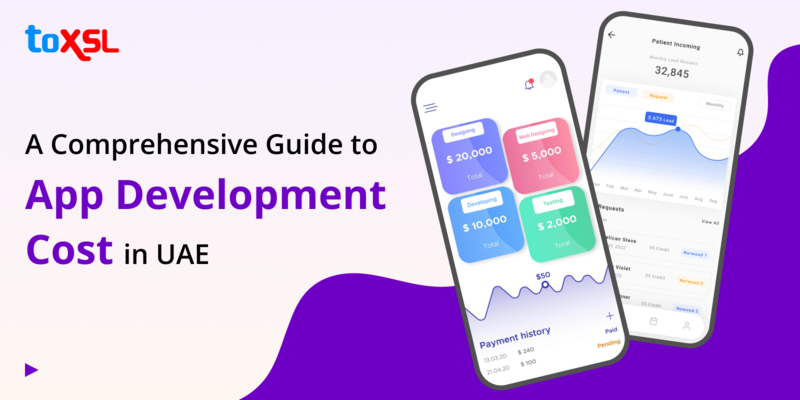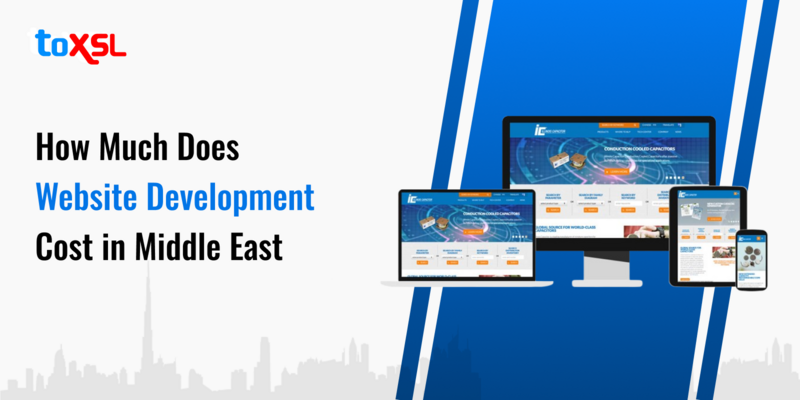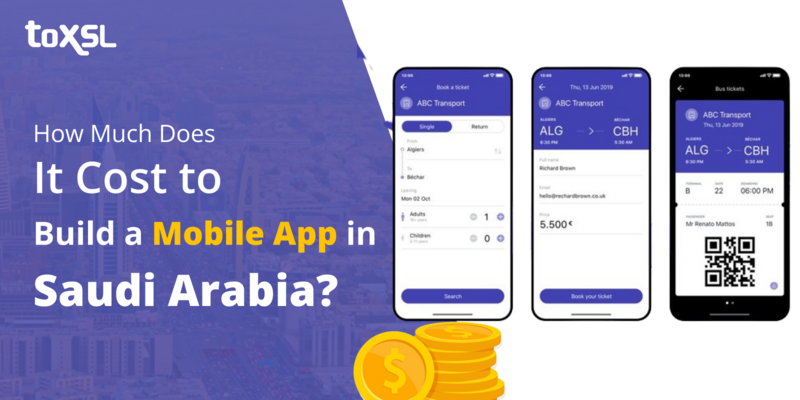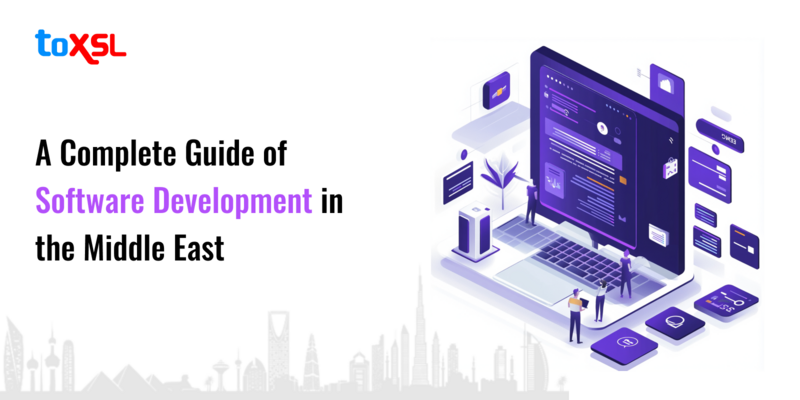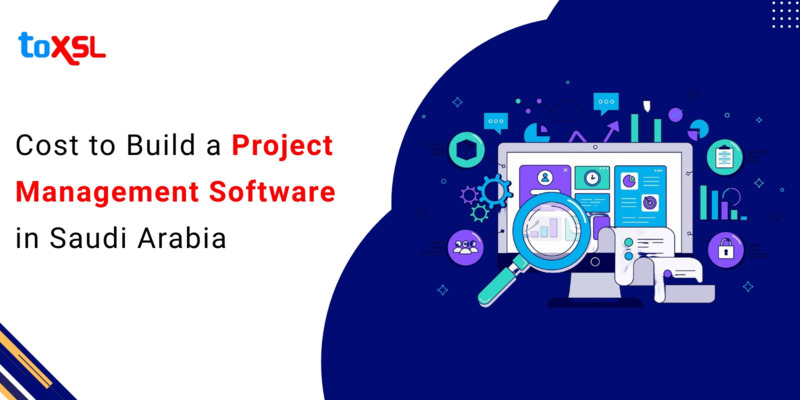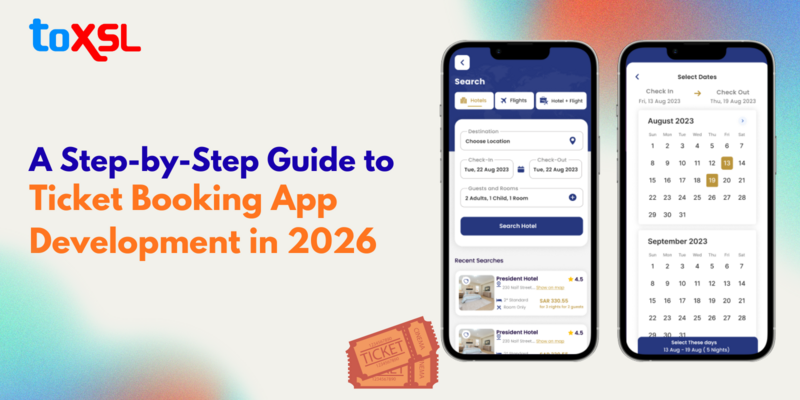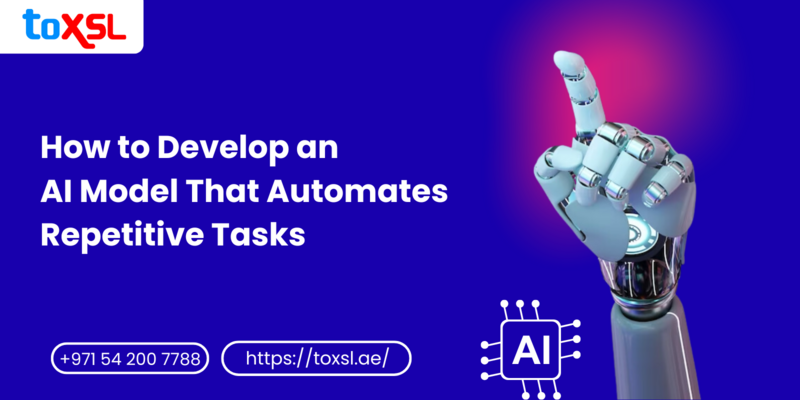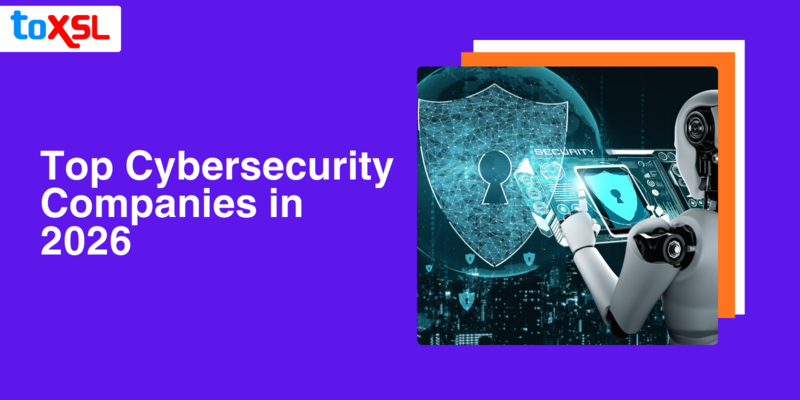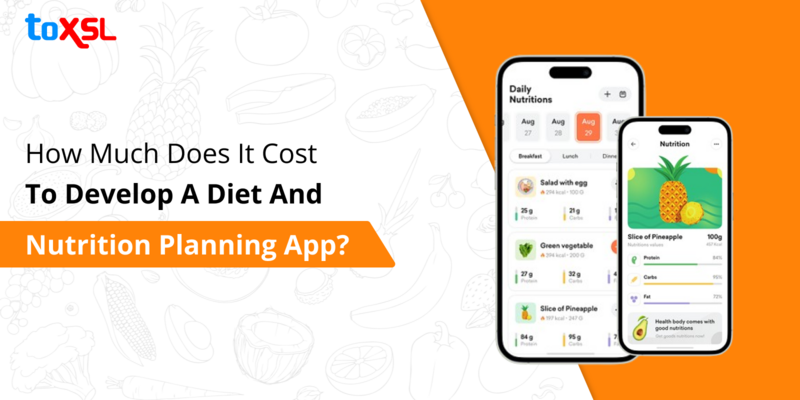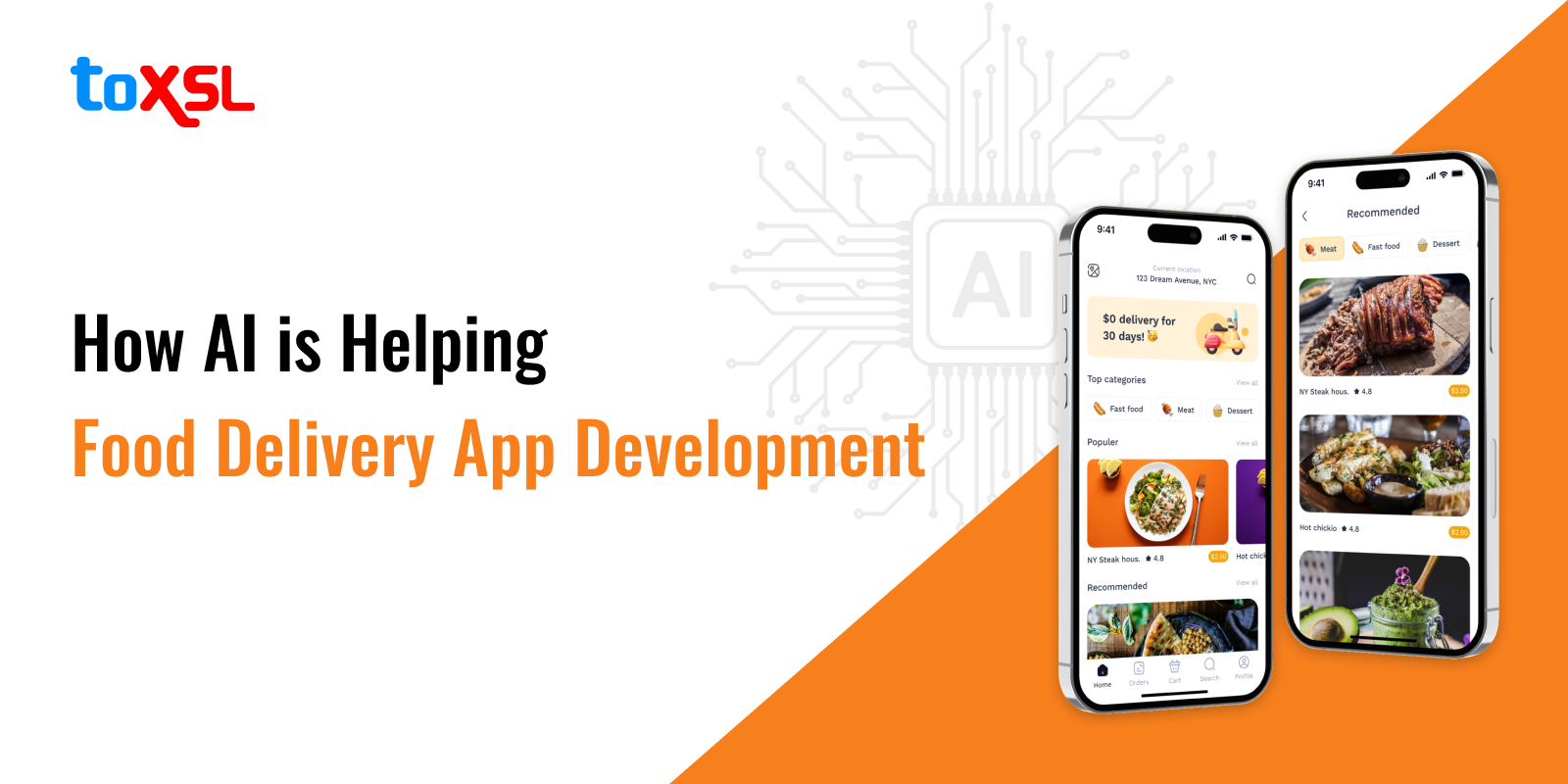
Ever since the introduction of AI, the field has experienced rapid growth and it is very well argued that AI is set to affect almost every aspect of life. The food delivery industry is a dynamic industry that keeps evolving with the development of newer technologies. AI is not only making food delivery faster, but it is also transforming how apps cater to customers’s preferences and help businesses create personalized and responsive services.
According to a survey, the food delivery market has experienced exponential growth, with the global market size expected to reach $320 billion by 2029. From predicting customer’s favorite dishes to helping businesses offer tailored recommendations, AI is reshaping the food delivery experience and offering greater convenience, personalization, and efficiency for consumers and businesses. Throughout this blog, we will uncover the role of AI in food app delivery services and the ongoing challenges that businesses face in the realm of food delivery, shedding light on AI’s capacity to revolutionize the food sector.
Key Takeaways:
- AI enhances food delivery through personalized recommendations, optimized routes, and demand prediction.
- AI-driven chatbots improve customer interactions, while fraud detection ensures security.
- Challenges include changing consumer preferences, regulatory compliance, and supply chain disruptions.
- Businesses must leverage AI strategically to stay competitive in the evolving food delivery industry.
Role of AI in Food Delivery Mobile Applications: Key Areas and Use Cases
The food delivery industry has undergone a significant transformation with the introduction of artificial intelligence. AI has revolutionized and brought about fundamental shifts in how food is ordered, prepared, and delivered. In this section, we will shed light on the key areas where AI solutions are playing a crucial role in shaping the landscape of food delivery.
1. Personalized Recommendations
One of the most impactful applications of AI in food delivery is personalized recommendations. AI algorithms analyze vast amounts of data, including user preferences, past orders, demographics, and even external factors like time of day and weather conditions. By understanding these variables, AI can suggest personalized restaurant choices and menu items to users. This not only enhances user satisfaction but also encourages repeat orders and increases average order values. Platforms like Uber Eats and DoorDash use AI to provide tailored recommendations based on user behavior and preferences, thereby improving engagement and driving revenue growth for restaurants.
2. Optimized Delivery Routes
Efficient delivery logistics are crucial to the success of food delivery services. AI plays a pivotal role in optimizing delivery routes by considering factors such as real-time traffic conditions, delivery windows, and the proximity of delivery addresses. AI algorithms continuously analyze and adjust routes to minimize delivery times and operational costs while maximizing the number of deliveries completed per driver. Companies like DoorDash and Deliveroo leverage AI-powered route optimization algorithms to ensure timely deliveries and improve overall service efficiency, thereby enhancing customer satisfaction.
3. Demand Prediction
Anticipating and managing demand fluctuations is essential for food delivery platforms and restaurants alike. AI algorithms analyze historical data, seasonal trends, events, and even social media insights to predict future demand patterns accurately. By forecasting demand, food delivery services can optimize inventory management, staffing levels, and marketing strategies to meet customer expectations while minimizing food waste. For example, Zomato uses AI-driven demand prediction models to help restaurants prepare for peak hours and seasonal fluctuations in customer orders, ensuring efficient operations and optimal resource allocation.
4. Enhanced Customer Interaction
AI-powered chatbots and virtual assistants have transformed customer service in the food delivery industry. These intelligent systems can handle a wide range of customer inquiries, from order status updates and menu inquiries to issue resolution and feedback collection. AI chatbots provide instant responses, operate 24/7, and continuously improve their interactions through machine learning. As proof, chatbots integrated into platforms like Grubhub and Postmates streamline customer support processes, reduce response times, and enhance overall user experience by providing personalized assistance.
5. Quality Control and Fraud Detection
Ensuring food quality and preventing fraud are critical challenges in food delivery. AI technologies such as computer vision and machine learning algorithms are employed to verify the accuracy of orders and detect anomalies or suspicious activities. Computer vision can analyze images of food items to ensure they meet quality standards before delivery, while AI algorithms monitor transactions for fraudulent behavior, ensuring secure transactions for both customers and restaurants. For instance, AI-powered systems on platforms like Uber Eats and Just Eat help maintain high standards of food quality and safety while safeguarding against fraudulent activities, thereby building trust among users and partners.
Thefood delivery industry has undergone a significant transformationwith the introduction of artificial intelligence. AI hasrevolutionized and brought about fundamental shifts in how food isordered, prepared, and delivered. In this section, we will shed lighton the key areas where AI solutions are playing a crucial role inshaping the landscape of food delivery.
Implementing AI in Food Delivery Apps
Integrating AI into food delivery apps requires expertise in data analytics, machine learning, and software development. One way to win the market using AI solutions is to use predictive analytics. Additionally, it is seen that companies specializing in mobile app development, such as Flutter app development companies and iOS app development companies, play a crucial role in implementing AI solutions that are scalable, efficient, flexible, secure, and aligned with business objectives.
However, businesses often choose to hire dedicated mobile app developers with expertise in AI and food delivery app development to customize AI functionalities according to specific needs. These developers collaborate closely with food businesses to ensure seamless integration and optimal performance of AI-driven features.
Navigating Challenges in the Food Industry: Adapting to a Dynamic Landscape
The global food delivery industry is a complex ecosystem that faces numerous challenges. In this section, let us explore some of the key challenges of implementing AI in the online food delivery industry today. Also, we will discuss strategies for overcoming these challenges faced by the food delivery app development industry.

1. Changing Consumer Preferences
Consumer preferences and behaviors are continually evolving, driven by factors such as health consciousness, sustainability concerns, and cultural influences. Today's consumers are increasingly demanding transparency regarding food sourcing, ingredients, and production methods. Meeting these expectations requires food businesses to adapt quickly, innovate continuously, and communicate effectively with their target audiences.
Strategy: Food businesses can leverage market research and data analytics to understand shifting consumer preferences. By offering diverse product options, emphasizing sustainability practices, and enhancing transparency in their operations, businesses can build trust and loyalty among consumers.
2. Food Safety and Regulations
Ensuring food safety and compliance with regulations is a fundamental challenge for the food industry. Regulatory requirements vary across regions and can be complex, covering aspects such as food labelling, hygiene standards, packaging, and allergen management. Non-compliance can result in legal penalties, reputation damage, and the loss of consumer trust.
Strategy: Implementing robust food safety management systems, conducting regular audits, and staying updated with regulatory changes are critical. Investing in training programs for staff and adopting technologies like blockchain for traceability can enhance transparency and compliance throughout the supply chain.
3. Supply Chain Management
The food supply chain is intricate, involving multiple stakeholders—from farmers and producers to distributors, retailers, and consumers. Supply chain disruptions, such as natural disasters, geopolitical events, and transportation issues, can impact food availability, pricing, and quality. Efficient supply chain management is essential for maintaining product integrity and meeting customer demands.
Strategy: Adopting agile supply chain practices, establishing strong partnerships with reliable suppliers, and implementing inventory management systems can mitigate risks and improve responsiveness to market fluctuations. Embracing technology like IoT sensors and AI for predictive analytics enhances visibility and efficiency across the supply chain.
4. Technological Advancements
While technology offers opportunities for innovation and efficiency in the food industry, adopting and integrating new technologies can be challenging. Small and medium-sized enterprises (SMEs) may face barriers such as high implementation costs, resistance to change, and the need for specialized expertise. Additionally, ensuring data security and privacy when using technologies like IoT, AI, and blockchain is crucial.
Strategy: Developing a technology roadmap aligned with business goals, conducting pilot projects to assess feasibility, and collaborating with tech-savvy partners or consultants can facilitate smooth technology adoption. Prioritizing cybersecurity measures and compliance with data protection regulations safeguards sensitive information.
6. Sustainability and Environmental Impact
Addressing sustainability concerns, such as food waste, carbon footprint, and environmental impact, is increasingly important for food businesses. Consumers, regulators, and stakeholders are demanding more sustainable practices throughout the food supply chain—from production and distribution to packaging and disposal. Balancing economic viability with environmental stewardship requires innovative approaches and a commitment to sustainable development goals.
Strategy: Implementing circular economy principles, reducing food waste through efficient production and distribution practices, adopting eco-friendly packaging solutions, and promoting sustainable sourcing practices are essential steps. Engaging with stakeholders, collaborating on sustainability initiatives, and communicating progress transparently build credibility and trust.
Why choose ToXSL Technologies as your AI-integrated food Delivery app development partner?
Throughout our blog, we acknowledged the various case studies on companies and know how implementing AI-driven solutions has helped them achieve significant improvements in key performance metrics.
Nowadays, AI is touching every aspect of the food delivery experience. However, the implementation of AI in food delivery apps is not without challenges. Looking into the future, the use of robotic delivery and NLP-based voice assistants is going to be an integral part of the online food delivery industry. Well, with all this innovation, the possibilities are endless and we can expect to see even more innovative applications of AI in food delivery apps.
So, if you are willing to improve your business, then it is better to understand your customers’s patterns and preferences by getting deep insights using AI algorithms. If you are wondering which company to choose for developing an AI-integrated food delivery app, ToXSL Technologies is here for you.
We are a leading web and mobile app development company in Dubai known for offering the best AI-integrated on-demand online food app delivery solution, allowing firms to make data-driven decisions with clarity and confidence. Our on-demand app developers create AI food delivery app development solutions that allow businesses to better align their marketing strategies with customer needs and preferences. Want to know more? Hire dedicated developers from us and let us guide you to excellence.
FAQs
1. How does AI enhance personalization in food delivery apps?
AI enhances personalization by analyzing user data, such as previous orders and preferences, to provide tailored recommendations for meals and restaurants. This not only improves the user experience but also fosters customer loyalty by making it easier for users to find food options that suit their tastes and dietary restrictions.
2. In what ways does AI optimize delivery routes?
AI optimizes delivery routes by analyzing real-time data, including traffic patterns and weather conditions, to determine the most efficient paths for delivery drivers. This reduces delivery times, minimizes fuel costs, and ensures that food arrives fresh, thereby improving overall customer satisfaction.
3. What role do AI-powered chatbots play in food delivery apps?
AI-powered chatbots facilitate seamless communication between customers and the app by enabling users to place orders, track deliveries, and receive support without human intervention. These chatbots can also offer personalized meal suggestions based on user preferences and dietary needs, enhancing the overall service experience

